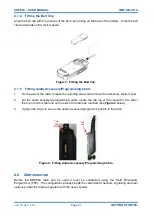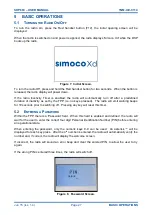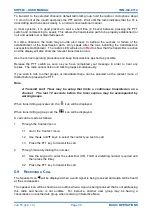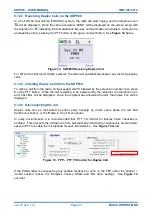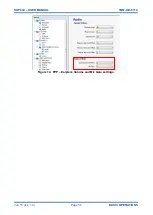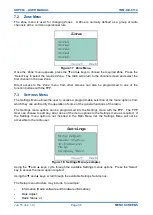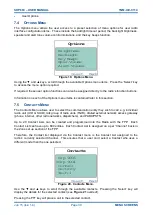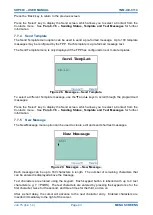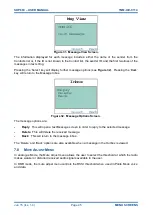
SDP660 – USER MANUAL
TNM-U-E-0114
Jun 15 (Iss. 1.4)
Page 35
MENU SYSTEM
6
MENU SYSTEM
This section details the operation of the menu system for the SDP660 Portable Radios.
The SDP660 radio software uses a programmed menu structure to enable the operator to access
the radio options. The structure of the menu can be configured using the FPP to meet a
customer’s specific needs. In simple configurations, no menu can be programmed. An example
menu structure for a radio is illustrated overleaf in
Figure 15.
Pressing the ‘F1’ key from the top-level channel screen enters the menu system. By default this
key has a soft menu label alongside it titled ‘MENU’. The soft key ‘F4’ is generally the ‘Back’ key.
The possible menus are:
Channel.
Zone (this is usually the first menu as it is often accessed).
Contact.
Radio Info.
Mute Adjust.
User Options.
Settings.
Backlight.
Brightness.
Contrast.
Key Beeps.
Speaker Volume.
Alert Volume.
Text Message.
GPS.
RSSI.
Scan.
Talk Groups.
The presence and order of the above menu selections is determined by the FPP configuration.
The
Settings
menu is a special case entry.
Settings
is a subgroup that can have any of the list of
menu selections assigned to it. This means that, if required, the lesser used selections can be
partly hidden away under the Settings subgroup but still remain accessible.
The order and presence of the Settings subgroup selections is determined by the FPP. For
instance
Info
,
Radio Status
and
Contrast
could be placed under Settings.
The
Options
menu group is also a menu subgroup. This subgroup contains the five configuration
options of: Backlight; Brightness; Speaker Volume; Alert Volume; and Key Beeps.

